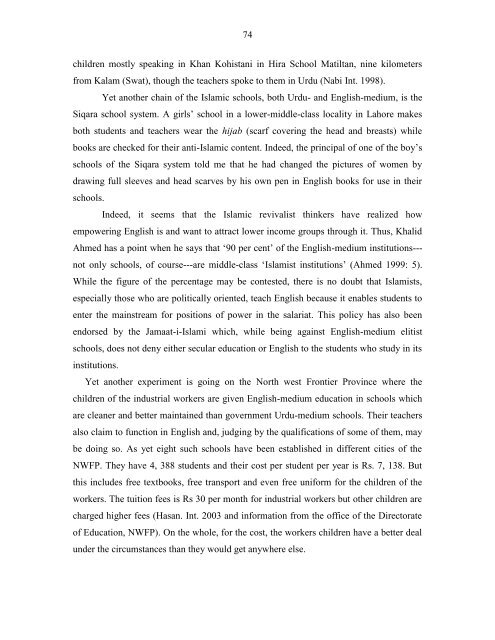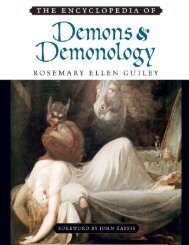DENIZENS OF ALIEN WORLDS
danizen1
danizen1
- No tags were found...
You also want an ePaper? Increase the reach of your titles
YUMPU automatically turns print PDFs into web optimized ePapers that Google loves.
74<br />
children mostly speaking in Khan Kohistani in Hira School Matiltan, nine kilometers<br />
from Kalam (Swat), though the teachers spoke to them in Urdu (Nabi Int. 1998).<br />
Yet another chain of the Islamic schools, both Urdu- and English-medium, is the<br />
Siqara school system. A girls‘ school in a lower-middle-class locality in Lahore makes<br />
both students and teachers wear the hijab (scarf covering the head and breasts) while<br />
books are checked for their anti-Islamic content. Indeed, the principal of one of the boy‘s<br />
schools of the Siqara system told me that he had changed the pictures of women by<br />
drawing full sleeves and head scarves by his own pen in English books for use in their<br />
schools.<br />
Indeed, it seems that the Islamic revivalist thinkers have realized how<br />
empowering English is and want to attract lower income groups through it. Thus, Khalid<br />
Ahmed has a point when he says that ‗90 per cent‘ of the English-medium institutions---<br />
not only schools, of course---are middle-class ‗Islamist institutions‘ (Ahmed 1999: 5).<br />
While the figure of the percentage may be contested, there is no doubt that Islamists,<br />
especially those who are politically oriented, teach English because it enables students to<br />
enter the mainstream for positions of power in the salariat. This policy has also been<br />
endorsed by the Jamaat-i-Islami which, while being against English-medium elitist<br />
schools, does not deny either secular education or English to the students who study in its<br />
institutions.<br />
Yet another experiment is going on the North west Frontier Province where the<br />
children of the industrial workers are given English-medium education in schools which<br />
are cleaner and better maintained than government Urdu-medium schools. Their teachers<br />
also claim to function in English and, judging by the qualifications of some of them, may<br />
be doing so. As yet eight such schools have been established in different cities of the<br />
NWFP. They have 4, 388 students and their cost per student per year is Rs. 7, 138. But<br />
this includes free textbooks, free transport and even free uniform for the children of the<br />
workers. The tuition fees is Rs 30 per month for industrial workers but other children are<br />
charged higher fees (Hasan. Int. 2003 and information from the office of the Directorate<br />
of Education, NWFP). On the whole, for the cost, the workers children have a better deal<br />
under the circumstances than they would get anywhere else.












